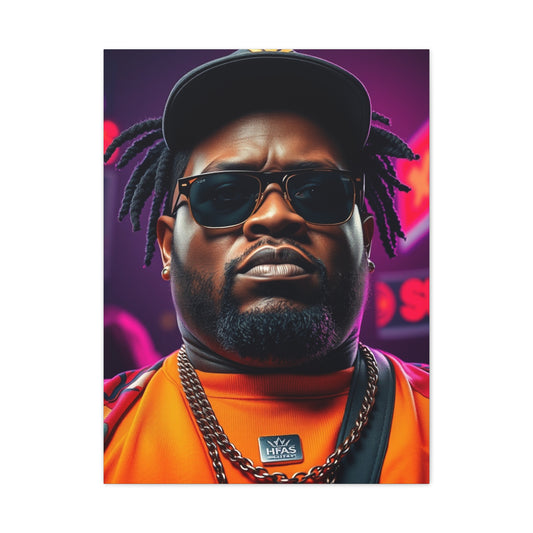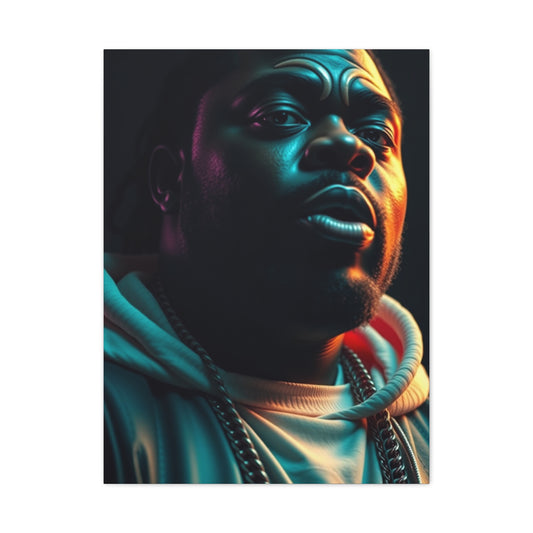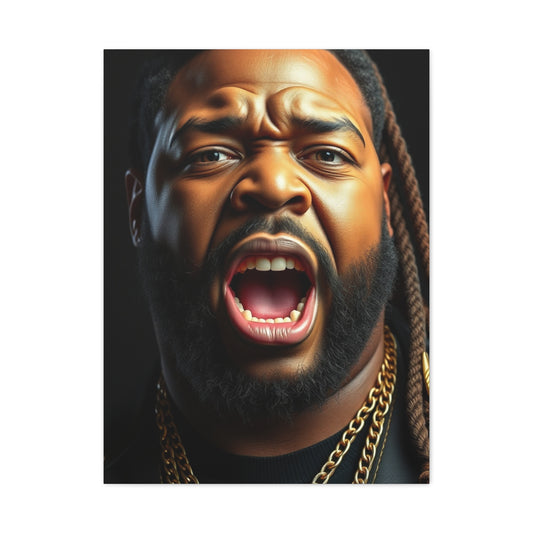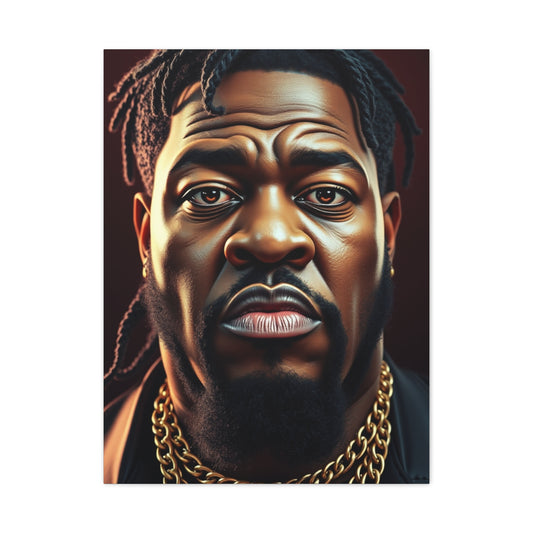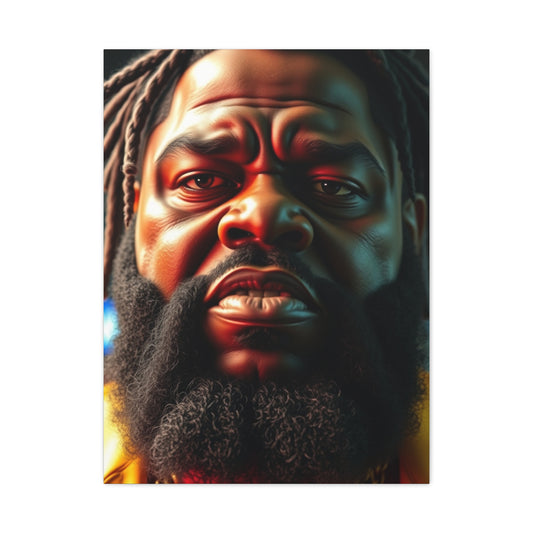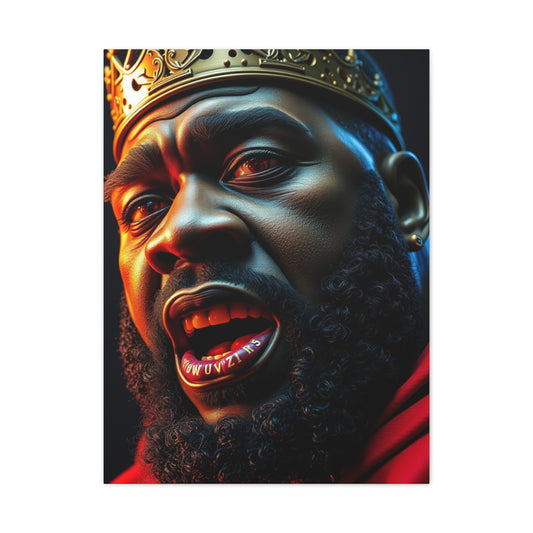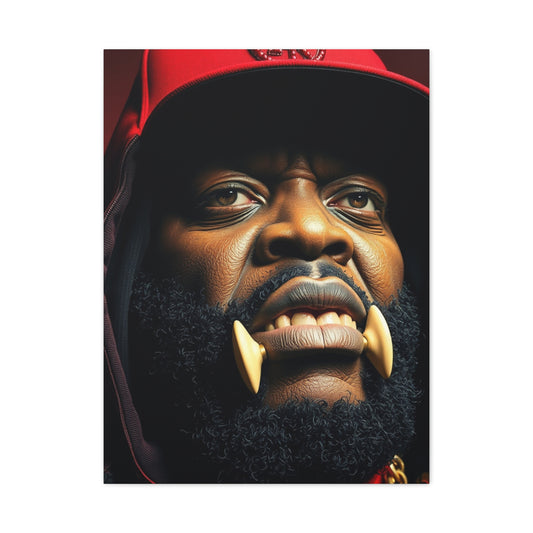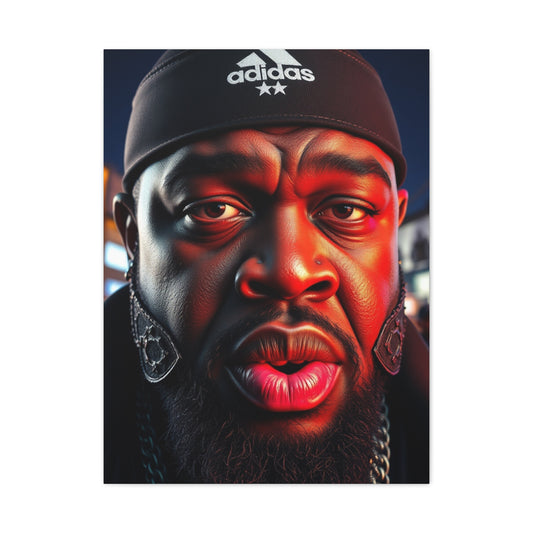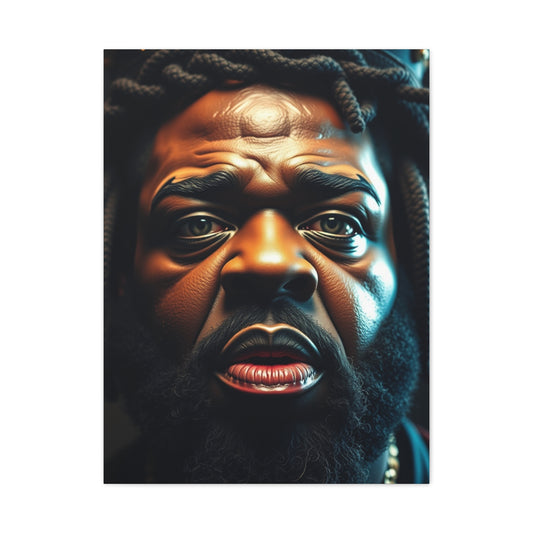Notorious Moments in Wall Art: Capturing Biggie’s Legacy Visually
The world of hip-hop has produced countless icons, but few have left as lasting an impact as Christopher George Latore Wallace, better known as The Notorious B.I.G. or Biggie Smalls. His influence extends far beyond music, permeating fashion, culture, and interior design. Today, Biggie wall art has become a powerful way to celebrate this legend while creating stunning visual spaces that honor the golden era of rap music.
Whether you're a longtime hip-hop enthusiast or someone who appreciates powerful visual statements, incorporating Biggie-inspired artwork into your living space creates an atmosphere that resonates with authenticity, creativity, and urban sophistication. This comprehensive guide explores every aspect of Biggie wall art, from understanding its cultural significance to selecting the perfect pieces for your home, office, or studio.
Brooklyn Royalty: Bringing Biggie Smalls to Your Wall
The borough of Brooklyn has produced numerous cultural icons, but Christopher Wallace stands among its most celebrated sons. When you choose to display Biggie artwork in your space, you're not just decorating walls – you're paying homage to a legend whose roots run deep in the heart of New York's most diverse borough.
Biggie's connection to Brooklyn goes beyond mere geography. His music painted vivid pictures of life in Bedford-Stuyvesant, capturing both the struggles and triumphs of urban existence. This authenticity translates beautifully into visual art, where artists capture not just his physical likeness but the essence of his Brooklyn spirit.
Contemporary artists have embraced this connection, creating pieces that incorporate iconic Brooklyn imagery alongside Biggie's portrait. Skyline silhouettes, bridge imagery, and urban landscapes frequently appear in these compositions, creating a powerful sense of place that resonates with both locals and admirers from around the world.
The appeal of Brooklyn-themed Biggie art extends to anyone who appreciates authentic urban culture. These pieces work particularly well in loft spaces, modern apartments, and any environment where you want to celebrate the raw energy of city life. The combination of Biggie's commanding presence with Brooklyn's architectural elements creates visual narratives that are both personal and universal.
When selecting Brooklyn-themed Biggie artwork, consider pieces that balance his portrait with subtle environmental elements. The most effective designs don't overwhelm the viewer with too many competing visual elements but instead use Brooklyn imagery to enhance and contextualize Biggie's presence.
Color palettes for these pieces often draw from the urban environment – concrete grays, brick reds, and the deep blues of evening skies over the city. These earthy tones make Brooklyn-themed Biggie art incredibly versatile for interior design, complementing both modern and industrial decorating styles.
The emotional impact of these pieces cannot be understated. For many viewers, Brooklyn-themed Biggie art represents more than decoration – it symbolizes the power of place in shaping identity and the possibility of transcending circumstances through talent and determination.
From the Streets to the Studio: Biggie in Canvas Form
The journey from street corners to recording studios represents one of hip-hop's most powerful narratives, and Biggie Smalls embodied this transformation better than almost anyone. Canvas artwork celebrating this evolution captures not just a moment in music history but a broader story about ambition, talent, and the democratizing power of artistic expression.
Canvas prints offer unique advantages for displaying Biggie artwork. The texture and depth of canvas create a more sophisticated presentation than standard posters, elevating the artwork to gallery-quality status. This medium particularly suits portraits that emphasize Biggie's contemplative side – images that capture him in the recording booth, writing lyrics, or in quiet moments between performances.
The durability of canvas makes it an excellent investment for long-term display. Unlike paper prints that may fade or deteriorate over time, high-quality canvas prints maintain their visual impact for decades when properly cared for. This longevity makes canvas Biggie art particularly appealing to serious collectors and those who view their wall art as long-term investments.
Artists working in canvas often experiment with mixed media approaches, incorporating elements like metallic accents, textured paints, or even collage elements that reference Biggie's lyrics or album artwork. These dimensional effects are impossible to achieve with traditional printing methods, making each canvas piece unique and engaging on multiple sensory levels.
The size flexibility of canvas printing allows for everything from intimate portrait sizes perfect for home offices to large-scale statement pieces that can anchor entire room designs. Gallery-wrapped canvas, where the image extends around the edges of the frame, creates a clean, modern presentation that works well in contemporary interiors.
When choosing canvas Biggie artwork, pay attention to the quality of both the image reproduction and the canvas material itself. Museum-quality canvas and archival inks ensure that your investment will maintain its visual impact over time. The weight and texture of the canvas should feel substantial – cheap canvas often appears thin and flimsy, detracting from the overall impression of the piece.
Lighting plays a crucial role in presenting canvas artwork effectively. Unlike glossy prints that can reflect light and create glare, canvas has a matte finish that looks excellent under various lighting conditions. This versatility makes canvas Biggie art suitable for spaces with challenging lighting situations.
The psychological impact of canvas presentation shouldn't be overlooked. Viewers unconsciously associate canvas with serious art, lending additional gravitas to Biggie portraits. This elevated perception makes canvas prints particularly effective in professional environments where you want to make a sophisticated impression while still celebrating your cultural interests.
Crown Iconography: The Most Famous Biggie Portraits
The crown has become inseparable from Biggie's visual legacy, transforming from a simple prop in a single photo shoot into one of hip-hop's most recognizable symbols. Understanding the evolution and significance of crown iconography in Biggie art helps appreciate why these images continue to resonate so powerfully with audiences worldwide.
The original crown photograph, taken by photographer Barron Claiborne for Rap Pages magazine, was intended as a playful take on Biggie's "King of New York" persona. However, the image transcended its original context, becoming prophetic after Biggie's death transformed him from a living artist into a legendary figure whose influence continues to grow.
Contemporary artists have interpreted the crown motif in countless ways, from hyper-realistic reproductions of the original photograph to abstract interpretations that use crown imagery as a starting point for more complex compositions. Some artists incorporate multiple crowns, creating visual hierarchies that speak to different aspects of Biggie's legacy – his musical achievements, cultural influence, and enduring popularity.
The crown symbol works on multiple levels in Biggie artwork. On its most literal level, it represents his self-proclaimed status as the "King of New York." More abstractly, it symbolizes the elevation of hip-hop culture from marginalized expression to mainstream art form. For many fans, the crown represents the idea that talent and authenticity can overcome any obstacle.
Color choices in crown-themed Biggie art often carry additional meaning. Gold crowns emphasize luxury and achievement, connecting to the aspirational themes in much of Biggie's music. Silver or platinum treatments suggest modernity and sophistication. Some artists use unexpected colors – deep purples for royalty, brilliant blues for loyalty, or even matte blacks for power and mystery.
The positioning of the crown within the composition can dramatically affect the artwork's impact. Crowns placed prominently on Biggie's head emphasize his royal status, while crowns floating above or beside his portrait suggest transcendence or spiritual elevation. Some artists deconstruct the crown image, using individual elements like jewels or metal pieces to create more abstract compositions.
Three-dimensional interpretations of crown imagery have become increasingly popular, with artists creating layered compositions where crown elements appear to project from the surface. These dimensional effects work particularly well with canvas and metal prints, adding physical depth that enhances the symbolic weight of the crown motif.
The commercial success of crown-themed Biggie art has led to countless variations and interpretations. While this popularity has produced some exceptional pieces, it has also resulted in oversaturation of certain imagery. The most effective crown-themed pieces find fresh ways to interpret this familiar symbol while maintaining its essential power and recognition.
Cultural context plays an important role in how crown imagery is received. In communities where Biggie's music holds particular significance, crown-themed art often carries deeper emotional resonance. These pieces become more than decoration – they serve as cultural touchstones that connect viewers to broader themes of resilience, achievement, and community pride.
Biggie Wall Art for the Ultimate Hip-Hop Setup
Creating a comprehensive hip-hop-themed space requires careful consideration of how different elements work together to create a cohesive visual story. Biggie wall art serves as an excellent foundation for these setups, providing a focal point around which other cultural elements can be arranged.
The key to an effective hip-hop setup lies in understanding the visual language of the culture. This includes not just individual pieces of art but also how they relate to furniture choices, lighting design, and spatial arrangement. Biggie artwork works particularly well when combined with elements that reference other aspects of hip-hop culture – turntables, vinyl records, graffiti-style lettering, and urban photography.
Scale relationships are crucial in hip-hop-themed spaces. Biggie portraits work best when they're sized appropriately for their intended viewing distance and the scale of surrounding elements. A large Biggie canvas can anchor an entire wall, while smaller pieces work better as part of gallery groupings that tell more complex visual stories.
Color coordination helps unify hip-hop-themed spaces without making them appear overly matched or artificial. Biggie artwork often incorporates rich colors – deep blues, warm golds, and dramatic blacks and whites. Using these colors as starting points for room design creates harmony while allowing individual pieces to maintain their distinct character.
Lighting design can make or break a hip-hop-themed space. Dramatic lighting that creates strong contrasts enhances the urban aesthetic that many hip-hop fans appreciate. Track lighting, exposed bulbs, and strategic use of shadows can transform even simple Biggie prints into compelling focal points that command attention.
Furniture choices should complement rather than compete with wall art. Industrial materials like metal and exposed wood often work well with hip-hop themes, providing a raw authenticity that matches the culture's urban roots. However, comfort shouldn't be sacrificed for aesthetic consistency – the best hip-hop setups feel lived-in and welcoming rather than museum-like.
The inclusion of music playback equipment adds authenticity to hip-hop-themed spaces. Whether it's a modern sound system or vintage turntables, having the capability to actually play hip-hop music in the space creates a more immersive experience. The visual presence of speakers, amplifiers, and music sources also adds textural interest that complements wall art.
Personal touches distinguish authentic hip-hop setups from generic themed rooms. This might include vinyl records from your personal collection, concert tickets or posters from shows you've attended, or photographs that connect you personally to hip-hop culture. These elements create layers of meaning that make the space uniquely yours.
Storage considerations are often overlooked in themed room design. Hip-hop culture has always been associated with collecting – records, tapes, CDs, and memorabilia. Incorporating stylish storage solutions that keep collections accessible while maintaining the room's aesthetic appeal requires thoughtful planning.
The arrangement of seating should facilitate both solitary appreciation of the art and social interaction around music. Hip-hop culture is inherently social, and the best hip-hop-themed spaces accommodate both intimate listening sessions and larger gatherings where music and visual art combine to create memorable experiences.
Black & Gold Biggie Prints: Classic Meets Luxe
The combination of black and gold in Biggie artwork represents more than just attractive color coordination – it embodies themes that run throughout his music and persona. This sophisticated palette bridges the gap between street authenticity and aspirational luxury, creating pieces that work equally well in urban lofts and upscale homes.
Black and gold color schemes have deep cultural resonance within hip-hop culture. Black represents power, elegance, and the urban experience that shaped much of hip-hop's early development. Gold symbolizes success, achievement, and the aspirational themes that motivate many artists and fans. Together, these colors create a visual language that speaks to hip-hop's core values of authenticity combined with ambition.
The technical execution of black and gold Biggie prints requires careful attention to contrast and detail. Black backgrounds can either enhance golden elements through dramatic contrast or absorb detail if not properly balanced. The most effective pieces use varying tones of both colors, creating depth and visual interest rather than flat, single-tone applications.
Metallic gold elements in Biggie prints often reference specific aspects of his image – his famous crown, jewelry, or the golden microphones that symbolize his vocal prowess. Some artists incorporate actual metallic inks or foil applications that create reflective surfaces, adding dimensional interest that changes as lighting conditions vary throughout the day.
The versatility of black and gold makes these prints suitable for a wide range of interior design styles. In modern spaces, the high contrast creates striking focal points that complement minimalist aesthetics. In more traditional settings, the classic elegance of the color combination allows hip-hop imagery to integrate seamlessly with existing decor.
Typography often plays a crucial role in black and gold Biggie prints. Song lyrics, album titles, or iconic quotes rendered in golden text against black backgrounds create powerful visual statements. The choice of font can dramatically affect the piece's overall impact – from clean, modern sans-serif types that emphasize sophistication to more decorative scripts that add personality and flair.
Different printing processes affect how black and gold elements appear in finished pieces. Digital prints offer precise color control and consistent reproduction, making them ideal for detailed work with multiple gold tones. Screen printing can achieve more dramatic metallic effects but may be limited in detail reproduction. Understanding these technical aspects helps in selecting pieces that will meet your specific aesthetic and quality expectations.
The psychological impact of black and gold imagery shouldn't be underestimated. These colors naturally create feelings of luxury and exclusivity, elevating Biggie's image from street-level authenticity to aspirational heights. This dual appeal makes black and gold prints particularly effective for people who appreciate both hip-hop culture and sophisticated interior design.
Framing choices for black and gold prints require careful consideration. Simple black frames often work best, allowing the artwork itself to provide all necessary contrast and interest. Gold frames can work but risk overwhelming the composition unless used sparingly and with restraint. Matte finishes generally complement the sophisticated aesthetic better than glossy alternatives.
The market for black and gold Biggie prints includes both mass-produced items and limited edition art pieces. While mass market options provide affordable access to this aesthetic, limited edition pieces often feature superior materials and printing processes that enhance the luxury appeal of the black and gold color scheme.
Pop Art Style: Biggie Smalls in Bold Colors
The pop art movement's influence on contemporary culture has created exciting opportunities for reimagining iconic figures like Biggie Smalls through bold, vibrant color palettes that transform familiar imagery into striking visual statements. This artistic approach breathes new life into classic Biggie portraits while making them accessible to audiences who might not typically gravitate toward traditional hip-hop imagery.
Pop art's emphasis on bold color combinations creates dramatic visual impact that works particularly well with Biggie's commanding presence. Artists working in this style often employ unexpected color choices – electric blues, hot pinks, lime greens, and brilliant oranges – that create energy and movement within static compositions. These vibrant palettes make Biggie artwork suitable for contemporary spaces that celebrate color and creativity.
The technical approach of pop art style Biggie pieces often involves simplified forms and high contrast relationships that emphasize essential elements while eliminating unnecessary detail. This reduction to core visual elements creates images that read clearly from a distance while maintaining interest upon closer inspection. The result is artwork that functions effectively in both large spaces and intimate settings.
Multiple image variations within single compositions represent another hallmark of pop art influence. Artists create series of Biggie portraits in different color combinations, arranged grid-style in single pieces that show various interpretations of the same basic image. These multi-panel works create dynamic wall installations that change character depending on viewing angle and lighting conditions.
The democratizing influence of pop art makes it particularly appropriate for hip-hop imagery. Just as pop art challenged traditional fine art hierarchies by incorporating commercial imagery and bold graphics, hip-hop culture has always celebrated the elevation of street-level expression to mainstream recognition. Pop art style Biggie pieces embody this shared spirit of accessibility and cultural democratization.
Screen printing and digital reproduction work particularly well for pop art style pieces, allowing for the bold, flat color areas that define the aesthetic. These printing methods also make it possible to create affordable multiple editions, keeping pop art Biggie pieces accessible to a broad range of collectors and decorators.
The integration of text elements often enhances pop art style Biggie pieces. Song lyrics, quotes, or even simple graphic elements can be incorporated using the same bold color approach applied to portrait elements. When done skillfully, these text additions create more complex compositions that reward extended viewing while maintaining immediate visual impact.
Contemporary interior design has embraced pop art aesthetics, making bold color Biggie pieces increasingly popular in modern residential and commercial spaces. These works complement contemporary furniture designs, bold architectural elements, and the kind of fearless decorating approach that characterizes cutting-edge interior design.
The commercial success of pop art style Biggie pieces has led to numerous interpretations ranging from faithful homages to Andy Warhol's style to more original approaches that use bold color as just one element in more complex compositions. The best pieces maintain the essential energy and accessibility of pop art while bringing fresh perspective to familiar imagery.
Cultural crossover potential represents one of the most interesting aspects of pop art style Biggie pieces. These works appeal not only to hip-hop fans but also to collectors of contemporary art, pop culture enthusiasts, and anyone who appreciates bold graphic design. This broad appeal makes pop art style pieces excellent choices for spaces where diverse audiences will view the artwork.
Graffiti & Street Art Prints of The Notorious B.I.G.
Graffiti and street art share deep cultural connections with hip-hop, making this artistic approach particularly authentic for Biggie imagery. These styles capture the raw energy and urban authenticity that characterized both Biggie's music and the broader cultural movement he helped define, creating wall art that feels genuine rather than commercially sanitized.
The visual language of graffiti brings immediate authenticity to Biggie artwork. Elements like bold letter forms, spray paint textures, and layered compositions mirror the aesthetic environment where hip-hop culture developed. These pieces often incorporate actual graffiti techniques, even in printed form, maintaining the handmade quality that distinguishes street art from more commercial graphic design approaches.
Color palettes in graffiti-style Biggie pieces typically draw from the urban environment – the bright colors of spray paint cans, the muted tones of concrete and brick walls, and the dramatic contrasts created by artificial lighting. These color choices create immediate associations with city environments and street culture, enhancing the authenticity of the overall composition.
Texture plays a crucial role in effective graffiti-style prints. The best pieces capture not just the visual appearance of street art but also its tactile qualities – the rough texture of spray paint on concrete, the layered buildup of multiple artistic interventions, and the weather-worn patina that gives street art its distinctive character.
Typography in graffiti-style Biggie pieces often incorporates the complex letter forms characteristic of traditional graffiti writing. These highly stylized alphabets can be challenging to read but create powerful visual impact that immediately identifies the work as authentic to street art traditions. When incorporating Biggie's lyrics or quotes, artists must balance readability with stylistic authenticity.
The scale of graffiti-style pieces affects their impact significantly. Large-scale works that approximate the size of actual street murals create immersive experiences that can transform entire rooms. Smaller pieces work better as components of larger gallery walls where they can interact with other elements to create more complex visual narratives.
Digital printing has made it possible to reproduce graffiti textures and spray paint effects with remarkable accuracy. However, the most effective pieces often incorporate actual hand-painted elements or mixed media applications that add authentic texture and dimensional interest. These hybrid approaches combine the accessibility of prints with the uniqueness of original artwork.
The legal and social context of graffiti adds layers of meaning to these artistic interpretations. While actual graffiti exists in tension with property rights and legal authority, printed versions allow people to appreciate the aesthetic without the associated legal complications. This sanitization can be seen as either positive accessibility or unfortunate commercialization, depending on one's perspective.
Street art festivals and legal graffiti walls have created new contexts for this art form, influencing how printed versions are perceived and valued. These legitimized venues have helped bridge the gap between underground street culture and mainstream art appreciation, making graffiti-style Biggie prints more acceptable in traditional interior design contexts.
The global reach of both hip-hop culture and street art movements means that graffiti-style Biggie pieces can incorporate visual elements from various international traditions. New York-style lettering might be combined with techniques from London, Berlin, or São Paulo, creating hybrid works that speak to hip-hop's worldwide influence.
How to Build a Rap Legends Wall with Biggie at the Center
Creating a comprehensive rap legends wall requires thoughtful planning to balance individual artist recognition with overall visual harmony. Positioning Biggie as the central element provides a strong foundation around which other legendary figures can be arranged, creating a cohesive tribute to hip-hop's greatest talents.
The hierarchical arrangement of a legends wall should reflect both artistic significance and visual balance. Biggie's central placement acknowledges his crucial role in hip-hop history while providing a focal point that anchors the entire composition. Surrounding artists should be positioned to create visual flow that guides the viewer's eye around the entire display without competing with the central focus.
Size relationships between different artist portraits require careful consideration. The central Biggie piece should be significantly larger than surrounding elements, establishing clear visual hierarchy. However, other legendary figures deserve respectful treatment – their portraits should be large enough to show proper reverence while small enough to maintain the overall composition's balance.
Color coordination across multiple artist portraits can be challenging but is essential for creating unified wall displays. One effective approach involves using consistent color treatments – perhaps sepia tones, black and white, or limited color palettes – that create harmony while allowing each artist's individual character to shine through. Alternatively, you might choose pieces that share similar background colors or compositional approaches.
The chronological arrangement of rap legends can add educational value to the display. Positioning artists according to their emergence in hip-hop history creates a visual timeline that tells the story of the genre's development. This approach works particularly well when combined with small text elements that identify key dates or achievements.
Geographic representation deserves consideration in comprehensive legends walls. Hip-hop developed differently in various regions, and a complete tribute should acknowledge artists from different areas – East Coast pioneers, West Coast innovators, Southern style creators, and Midwest contributors. Biggie's central position can represent East Coast excellence while surrounding pieces represent other regional contributions.
The inclusion of collaborative relationships can add depth to legends wall displays. Positioning artists who worked together, influenced each other, or shared significant moments creates visual subgroups within the larger composition. These relationships can be suggested through proximity, similar framing choices, or connecting visual elements.
Framing consistency helps unify multi-artist displays while allowing individual pieces to maintain their character. Using identical frames in different sizes creates visual harmony while acknowledging the different roles various artists played in hip-hop development. Frame color should be neutral enough not to compete with the artwork while substantial enough to give each piece appropriate weight.
Lighting design for legends walls requires special attention to avoid creating uneven illumination or glare problems across multiple pieces. Track lighting systems offer flexibility for illuminating different sized pieces uniformly. Alternatively, individual picture lights can provide focused illumination for each element while creating dramatic shadow effects that enhance the overall presentation.
The temporal aspect of legends walls means they may evolve over time as new artists achieve legendary status or as your personal preferences change. Designing the initial layout with future additions in mind prevents the need for complete reorganization when modifications become desirable. This might involve leaving strategic spaces for expansion or choosing flexible hanging systems that allow easy reconfiguration.
Maintenance considerations for multi-piece displays include dust accumulation, fading prevention, and potential damage from handling during rearrangements. Using UV-protective glazing on all pieces helps prevent fading, while consistent cleaning schedules maintain the professional appearance that legends walls deserve.
Juicy Vibes Only: Biggie Wall Art for Music Lovers
Music lovers approach wall art differently than casual decorators, seeking pieces that reflect genuine passion for the art form rather than superficial style choices. Biggie artwork for serious music enthusiasts should demonstrate deep understanding of his artistic contributions while creating visual experiences that enhance rather than distract from the music listening experience.
The connection between visual art and musical appreciation runs deeper than simple decoration. For true music lovers, wall art serves as a constant reminder of artistic excellence, providing inspiration during listening sessions and creating environments that enhance musical focus and appreciation. Biggie pieces designed for this audience often incorporate subtle references to his compositional techniques, lyrical complexity, or production innovations.
Album artwork references appear frequently in music lover-oriented Biggie pieces. These works might incorporate visual elements from "Ready to Die" or "Life After Death" covers, creating connections between wall art and the musical works that define Biggie's legacy. Such references demonstrate genuine knowledge of his catalog while creating visual bridges between different aspects of his artistic output.
Lyrical quotations integrated into visual compositions appeal strongly to music lovers who appreciate Biggie's wordplay and storytelling abilities. The most effective pieces select quotes that work both as standalone text and as integral parts of visual compositions. Typography choices should reflect the rhythm and flow of Biggie's delivery while maintaining readability and visual appeal.
Recording studio imagery often appears in music lover-oriented pieces, celebrating the creative process behind the music. These works might show Biggie behind microphones, working with producers, or in contemplative moments during recording sessions. Such imagery appeals to people who understand and appreciate the technical and creative aspects of music production.
The acoustic properties of spaces where music lovers display Biggie art deserve consideration. Rooms designed for serious music listening often have specific acoustic treatments that affect how wall art appears and how it interacts with the space's audio character. Artwork should complement rather than interfere with these acoustic considerations.
Limited edition and artist-signed pieces hold particular appeal for serious music collectors. These exclusive items represent not just decoration but investments in cultural artifacts that may appreciate in value while providing daily aesthetic pleasure. The knowledge that a piece is rare or specially created adds layers of meaning for dedicated music enthusiasts.
The seasonal or mood-based rotation of artwork allows music lovers to create different atmospheric effects that complement various listening experiences. Having multiple Biggie pieces that can be swapped in and out lets dedicated fans create visual environments that match their musical moods or seasonal preferences.
Documentation and provenance matter to serious music collectors, who often treat wall art as part of larger music-related collections. Pieces with clear artistic credits, printing information, and authenticity documentation provide the kind of detailed information that appeals to people who also carefully catalog their music collections.
The integration of music playback equipment with wall art creates cohesive environments where visual and audio elements enhance each other. This might involve positioning Biggie artwork near turntables, speakers, or other music equipment in ways that create functional yet aesthetically pleasing arrangements.
Community connections often matter to serious music lovers, who appreciate artists and pieces that are recognized and respected within knowledgeable circles. Biggie artwork that receives recognition from other music enthusiasts, critics, or industry professionals carries additional appeal beyond pure aesthetic merit.
Biggie Posters with Maximum Impact
Minimalist design approaches can be surprisingly effective for Biggie imagery, proving that powerful visual impact doesn't always require complex compositions or elaborate color schemes. The key lies in identifying essential elements that capture Biggie's essence and presenting them with clean, confident simplicity that lets each element carry maximum visual weight.
The reduction of visual elements to their core essentials challenges artists to identify what makes Biggie immediately recognizable and culturally significant. This might involve focusing on his distinctive silhouette, the iconic crown motif, or symbolic elements like microphones or Brooklyn imagery. The most successful minimalist pieces make dramatic impact through careful selection rather than comprehensive inclusion.
Typography often plays a crucial role in minimalist Biggie designs, with single words, brief quotes, or album titles carrying the full weight of textual communication. Font choices become critical in these spare compositions – each letterform must contribute to the overall aesthetic while maintaining perfect readability and appropriate cultural resonance.
Color palette restrictions in minimalist designs force careful consideration of each hue's psychological and cultural impact. A piece limited to black, white, and a single accent color must make that accent color work exceptionally hard to convey meaning and emotion. These constraints often lead to surprisingly powerful results that demonstrate color's communicative potential.
Negative space utilization distinguishes exceptional minimalist pieces from merely simple ones. Understanding how empty areas of the composition interact with positive elements allows artists to create dynamic tension and visual interest even within severely restricted visual vocabularies. The best minimalist Biggie pieces make viewers acutely aware of both what's shown and what's deliberately omitted.
Scale relationships become more critical in minimalist compositions where fewer elements must carry the full burden of visual communication. A single oversized element can create dramatic impact, while careful proportional relationships between multiple small elements can generate surprising complexity within overall simplicity.
The printing and presentation of minimalist pieces requires attention to details that might be less noticeable in busier compositions. Paper quality, color accuracy, and edge definition become more noticeable when there are fewer elements to distract the eye. These technical considerations can make the difference between amateur-looking and professional-quality results.
Minimalist Biggie pieces often work exceptionally well in modern interior design contexts where clean lines and uncluttered aesthetics are prioritized. These pieces can make powerful statements without overwhelming spaces that prioritize architectural elements or other design features. The simplicity makes them suitable for professional environments where bold imagery might be inappropriate.
The intellectual appeal of minimalist design attracts viewers who appreciate subtlety and sophistication in their cultural references. These pieces often require some cultural knowledge to fully appreciate, creating a sense of insider understanding that appeals to people who pride themselves on their hip-hop knowledge.
Economic considerations make minimalist posters particularly attractive to budget-conscious decorators. The simpler production requirements often translate to lower costs, making quality Biggie artwork accessible to people who couldn't afford more elaborate pieces. This accessibility aligns well with hip-hop culture's democratic values.
The timeless quality of well-executed minimalist design means these pieces are less likely to appear dated as design trends evolve. While elaborate compositions might look tied to specific eras, minimalist pieces often achieve a classic quality that maintains appeal across changing fashion cycles.
Quote Art: Biggie's Most Iconic Lines on Canvas
Biggie's lyrical genius provides rich source material for text-based artwork that celebrates his wordplay, wisdom, and cultural insight. Quote art transforms memorable lines into visual compositions that work as both reading material and decorative elements, creating pieces that engage viewers on multiple intellectual and aesthetic levels.
The selection of quotes for visual treatment requires balancing several considerations – lyrical quality, visual potential, and cultural resonance. The most effective pieces choose lines that work as standalone statements while carrying deeper meaning for people familiar with their original context. This dual functionality allows quote art to appeal to both casual viewers and dedicated hip-hop enthusiasts.
Typography design for quote art demands careful attention to how letterforms reflect and enhance the meaning of the words themselves. Aggressive, angular fonts might suit confrontational lyrics, while flowing, elegant scripts could complement more contemplative passages. The visual rhythm of the typography should mirror the musical rhythm of Biggie's delivery.
Layout and composition in quote art must balance readability with visual interest. Straight, horizontal text arrangements ensure easy reading but may lack visual dynamism. More creative layouts that curve, stack, or arrange words in meaningful patterns can create engaging compositions while maintaining legibility. The most successful pieces find innovative arrangements that enhance rather than obscure meaning.
Color choices in quote art carry communicative weight beyond pure aesthetics. Bold, contrasting colors create energy that might suit confrontational or celebratory lyrics. Subtle, muted palettes might better serve introspective or melancholy passages. The relationship between color and meaning should feel natural rather than forced or arbitrary.
Background treatments for quote art range from simple solid colors to complex photographic or illustrated elements. The key is ensuring that background elements support rather than compete with the text. Sometimes simple approaches work best, allowing the words themselves to carry the full weight of visual impact.
Size and scale considerations affect how quote art functions in different spaces. Large-scale pieces with substantial text can serve as focal points in prominent locations, while smaller pieces work better in intimate spaces where closer reading is natural. The viewing distance should match the text size for optimal reading comfort.
The integration of portrait elements with quote text creates hybrid pieces that combine the immediate recognition of Biggie's image with the intellectual engagement of his words. These combinations must be handled carefully to avoid visual confusion – each element should have its proper role and weight within the overall composition.
Cultural context adds layers of meaning to quote art that knowledgeable viewers can appreciate. References to specific songs, albums, or historical moments in hip-hop create insider knowledge rewards that deepen engagement. However, pieces should work for general audiences even when these specific references aren't understood.
Multiple quote arrangements allow single pieces to showcase several different lyrical passages, creating more comprehensive tributes to Biggie's verbal abilities. These multi-quote compositions require careful hierarchy to avoid visual chaos while ensuring each passage receives appropriate attention.
The educational value of quote art shouldn't be overlooked. These pieces introduce Biggie's words to viewers who might not otherwise encounter them, potentially inspiring further exploration of his music and message. This educational function adds social value beyond pure decoration.
The Crowned King of New York — Immortalized in Art
The "King of New York" concept represents more than just a catchy phrase or promotional angle – it embodies Biggie's relationship with his city and his role in defining East Coast hip-hop during a crucial period in the genre's development. Artwork that explores this theme taps into rich veins of urban pride, artistic achievement, and cultural significance.
New York imagery in Biggie artwork often incorporates the city's most recognizable architectural and cultural elements. Skyline silhouettes, bridge imagery, subway references, and neighborhood-specific details create visual contexts that ground Biggie's portrait in his home environment. These environmental elements should enhance rather than overwhelm the central figure.
The crown symbolism takes on additional meaning when connected to New York imagery. Rather than simple self-aggrandizement, the crown becomes a symbol of artistic sovereignty over a specific cultural territory. This interpretation resonates with viewers who understand the competitive nature of hip-hop culture and the significance of geographical identity within the genre.
Urban landscape photography combined with Biggie portraits creates compelling mixed media pieces that blend documentary authenticity with artistic interpretation. These works might overlay Biggie's image on actual New York street scenes or architectural details, creating compositions that feel both realistic and symbolic.
The "King" concept allows for exploration of leadership themes that extend beyond music into broader cultural influence. Artwork can reference Biggie's role in inspiring other artists, shaping fashion trends, or influencing how people think about urban culture and community identity.
Color palettes that reference New York's visual character often emphasize the city's gritty urban reality alongside its glamorous possibilities. Concrete grays and brick reds ground pieces in authentic urban experience, while gold accents and bright highlights suggest the success and recognition that Biggie achieved.
Typography treatments for "King of New York" themed pieces might incorporate fonts that reference various aspects of New York's visual culture – from subway signage to Broadway marquees to graffiti lettering. These typographic choices can subtly reinforce the New York connection while maintaining readability and visual appeal.
Conclusion:
The enduring appeal of Biggie Smalls wall art is not just about style or aesthetics—it's about legacy. It’s about capturing the voice of a generation, the rise of an underdog, and the cultural pulse of 1990s Brooklyn. In homes, studios, offices, and creative spaces around the world, Biggie’s image continues to resonate because it represents more than a musical icon—it stands as a symbol of lyrical genius, unapologetic authenticity, and the dream of rising beyond circumstance.
By bringing Biggie to your walls, you’re making a bold statement: that art can be personal, cultural, and deeply rooted in history. Whether it’s a minimalist black-and-white portrait, a graffiti-style mural bursting with color, or a piece layered with his lyrics and crown motif, each visual interpretation invites viewers to remember not just the artist, but the world he came from and the barriers he broke through.
For fans of hip-hop, Biggie wall art is a tribute to the golden era—a time when storytelling, rhythm, and raw emotion dominated the genre. For interior designers and art lovers, it offers an opportunity to blend street culture with high design, to infuse urban energy into modern, industrial, or even luxury spaces. It’s the perfect union of cultural history and contemporary visual expression.
More importantly, Biggie wall art serves as a powerful daily reminder: that greatness can come from anywhere, that words have weight, and that legacies can be immortalized not just through music but through the images and symbols we choose to surround ourselves with.
As interest in hip-hop culture continues to grow across generations and geographies, Biggie’s presence in visual art solidifies his role as a timeless figure. His face, his crown, his lyrics—they are now part of our collective cultural vocabulary. And as long as walls exist to tell stories, Biggie’s story will remain one of the most iconic to ever be displayed.
In the end, incorporating Notorious B.I.G. wall art into your space isn’t just about paying homage to a music legend—it’s about inviting a piece of history into your everyday life. It’s about recognizing that greatness, once captured in sound, can also live forever in visual form.

